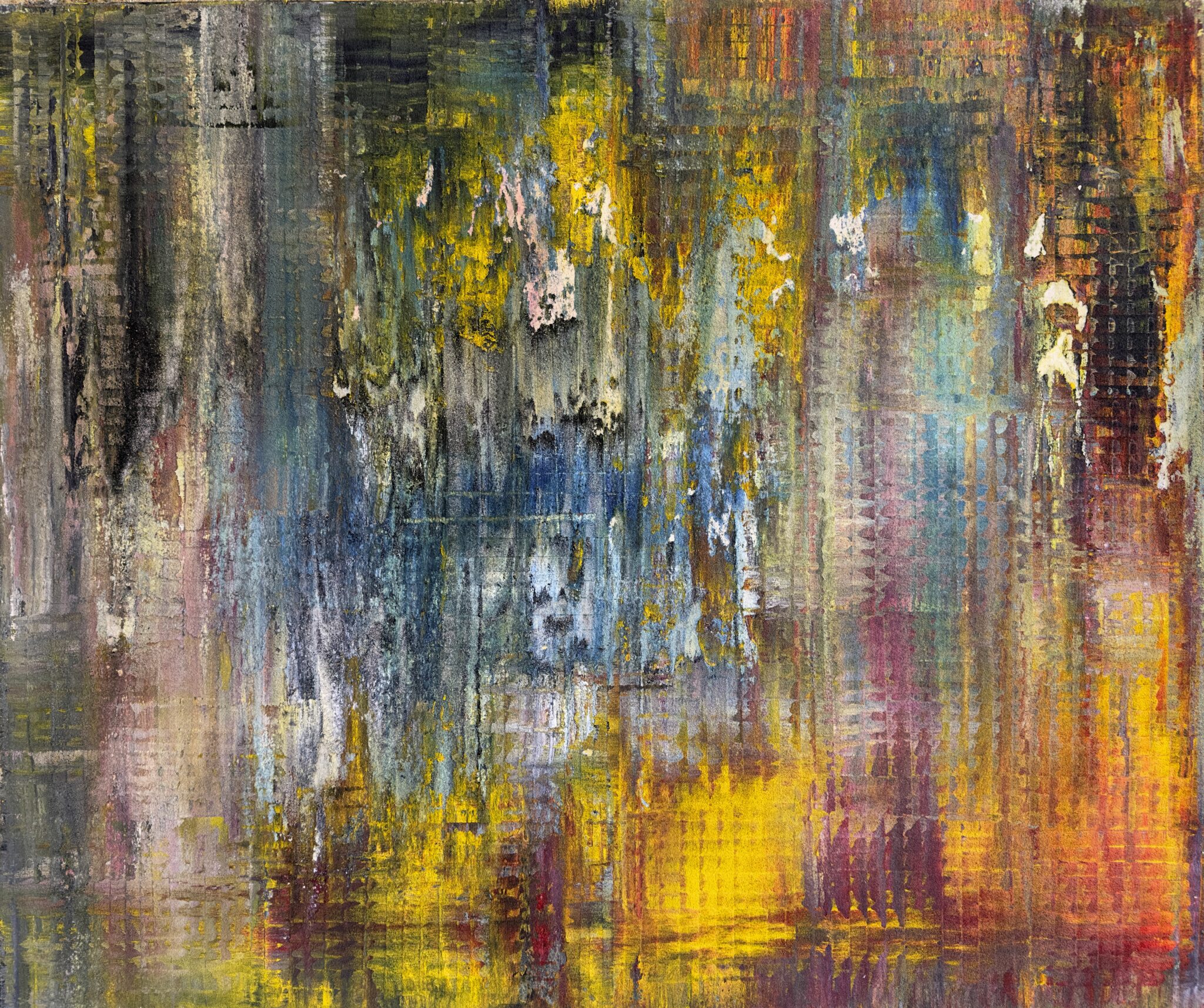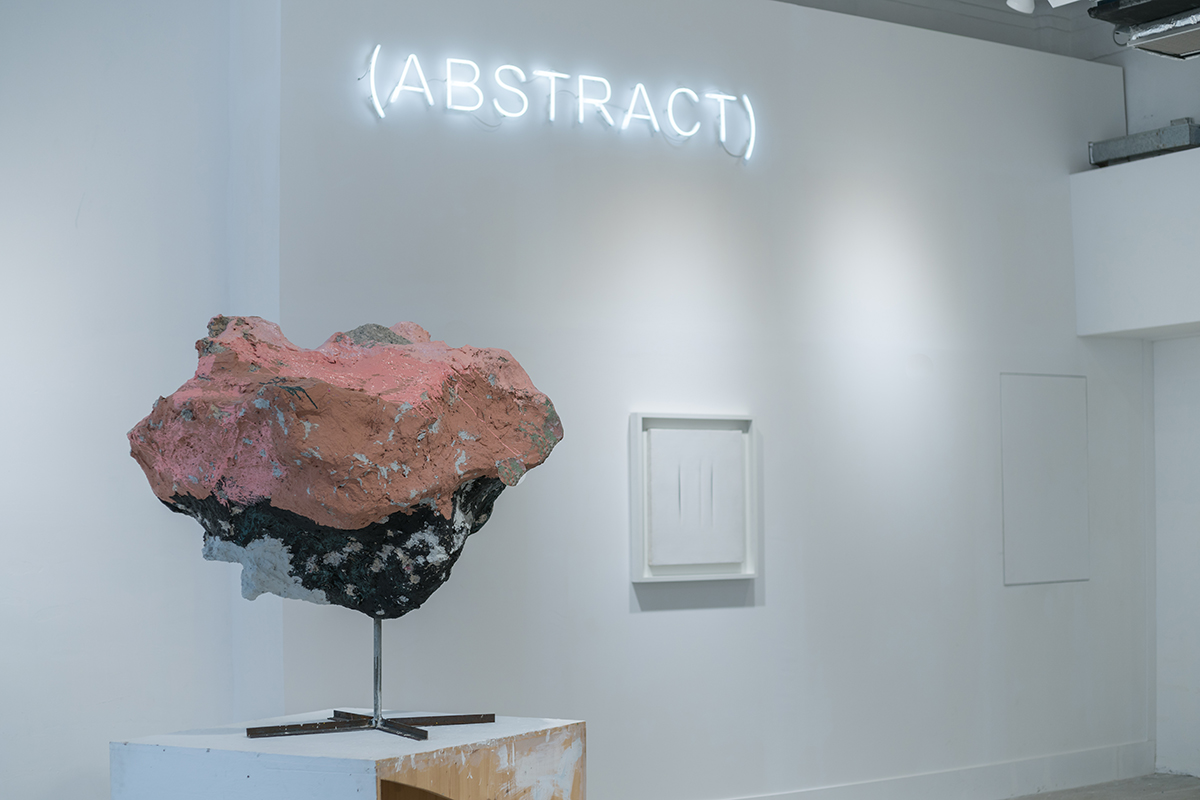
Sassan Behnam-Bakhtiar, Energy Within, 2023
The French-Iranian artist Sassan Behnam-Bakhtiar has a solo show opening in Phillips on Berkeley Square. His compelling paintings examine themes of loss, anger, nature, healing and positive and negative energy. Each of Behnam-Bakhtiar’s paintings in the series reflect the internal structure of trees which he connects with trauma-recovery and healing. The selling exhibition has been supported by his German gallerist Setareh and is curated by Kamiar Maleki, erstwhile director of Photo London among other hats.
Behnam-Bakhtiar comes from a notable Iranian family; his great uncle Shahpour led the country’s last attempt at creating a liberal, democratic regime before the Islamic revolution ushered in an era of Muslim extremism. Jasper Greig, emerging collector and philanthropic advisor, spoke to the artist in his home in Cap Ferrat, about the personal experiences that informed his increasingly sought-after art
Jasper Greig: I would like to ask about your early life and how you got into painting?
Sassan Behnam-Bakhtiar: I am a fourth generation artist; my father was and is an artist and was highly involved in the government before the 1979 Islamic Revolution in Iran, as one of the key figures in bringing and developing modern art to Iran back in the day. Family-wise I was always showing signs of creativity and was very tight with my Dad before my parents separated when I was 3 years old. I was very close with my Dad until the age of 5 when I was still around in Europe – I was born in Paris. My first memory of art was my father teaching me how to paint!
I always had this creativity within me. Unfortunately the support to pursue my passion was not present in any way as a child and young adult, after being separated from my father.

Sassan Behnam-Bakhtiar, The Secret of Life, 2023
JG: Was your father very supportive of you wanting to pursue art as a career?
SBB: He was, but unfortunately, my parents divorced when I was young! But it stayed in me. That was the seed. When you’re a child, your first 3 years are the most formative – my own son is three and a half now, so I have seen it with my own eyes.
Follow LUX on Instagram: luxthemagazine
JG: You were born in France to an Iranian family, and then unusually moved to Iran. Did you feel your family’s reputation changed your experiences in Iran?
SBB: Being in school, I remember reading a chapter about Shahpour Bahktiar, the late Prime Minister, my great uncle, who was assassinated in Paris. They were showing videos of people chanting, literally swearing at our family. Everybody knew I was from that family so I was basically an outcast while I was in Iran. They wouldn’t accept me as an Iranian because I was born in France and I came from what they would call a ‘western family’. It was very tough at the beginning, until I integrated at about 12 or 13. I used to get bullied all the time. There are a lot of people over there who are like me so I found my group eventually, but for the first few years it was hell.
Simultaneously, I was always highly frustrated about the way Iran was being portrayed, even though I was not accepted by my own society.

Sassan Behnam-Bakhtiar, Powerful Beyond Measure, 2023
JG: Can you tell us about your journey into increasing your vibrations through meditation? You said you discovered that at a really low point in Iran.
SBB: I see it as a form of rebirth for me. I was at the lowest point in my life, and going through that transformation during those harsh times changed my life forever.
It was after taming my anger that I went back into my studio and I was looking for that signature style of work that you can see today. I will never forget – I did a body of work and it was the last painting from that body of work that was a two by four metre painting, a big one, where I actually found it. The whole body was exhibited at Saatchi Gallery in 2017. That was the first time I brought these paintings to the public because they were very intimate. Obviously, since then my style has developed and critics come and go – some say my work has the romantic qualities of a Monet, others say I am the perfect melting pot with my Persian background and Western techniques. Everyone has their own thing to say, but for me, my works are representations of energy at their core, no matter what subject I’m trying to depict.
JG: Your paintings involve the building up of layers, scraping those layers, relaying and spreading them back over each other. Does each painting start from a meditative process?
SBB: There were some small figurative elements to the works which slowly started to die out – nothing is planned behind my work. Those paintings at Saatchi, you can still see the collage elements on the work – they were the transition between the collage and the painting. Today, at least for now, I am highly focused on my abstract paintings and what I can do with my signature style of work. For now I can confidently say we will probably not be seeing any figurative elements for a while to come. But nothing is planned, everything is organic. I’m in a different zone when I paint.

Sassan Behnam-Bakhtiar, Earth, 2023
JG: Some of the greatest artists like Bacon and Freud, writers like James Joyce, all worked best away from their homeland. Do you think this can be a kind of liberation or do you think there is always a perpetual feeling of loss?
SBB: It’s difficult to explain how you feel because if you add on everything that has happened to me from a young age to today, if you feel it and you see it, it is the combination of all these things that will give you those emotions while you’re creating art. When I am working I find myself wearing a lot of the complicated times I have had on the surface of the canvas, but immediately I want to cover them.
Read more: Art Dubai opens in support of South Asian artists
It has shaped the way that I paint today. I would say that everything had a direct impact. I definitely miss home very much, even though things have been tough there for me. Whatever happened happened for a reason, for me to be able to paint the way I do today.

Sassan Behnam-Bakhtiar, Tree of Love, 2023
JG: If you were describing your paintings to an alien how would you describe them?
SBB: It’s very simple. My painting provides a window for you so you can have a better understanding of who you are. I have a much better idea of my own capabilities as a human being – I’m not saying I know it all, I’m still on my journey. But we are capable of powerful things beyond measure. You can heal yourself from a lot of injuries for instance, which I can do now.











Recent Comments